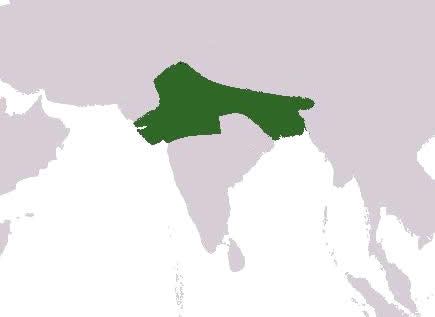 |
| Harsha kingdom map |
Harsha Vardhana was a king of northern India who reunited some of the small city-states that had become independent after the fall of the Gupta dynasty and who used his position to reinvigorate the practice of Buddhism throughout his territory.
Harsha Vardhana was a son of Prabhakaravardhana, the king of Thanesar in the eastern Punjab, and was not fi rst in the line of succession. At the age of 16 his elder brother Rajyavardhana was assassinated on the orders of the king of Gauda, Sasanka, and, inspired by the bodhisattva of Avalokitesvara, he assumed the position of regent and eventually of king.
He spent a number of years fighting against Sasanka and although he was not fully successful in defeating Gauda he was able to expand his territories across five countries bordering his base in what is now Uttar Pradesh. The identity of the five countries may have equated to Sind, Magadha, Kashmir, Valabhi, and Gujarat. This would represent a considerable expanse of territory, and the labor and potential for taxation that it yielded had enormous potential for development.
Harsha Vardhana’s rule is often identified as the time at which the ancient Indian world gave way to the medieval world, in which a system of centralized comparatively small kingdoms gave way to larger, decentralized empires composed of multiple centers with diverse ethnicities and religious and cultural practices.
Harsha Vardhana’s attempts to improve his state included the establishment of diplomatic relations with China and the creation of numerous Buddhist institutions. Notable among these were the monastic center or university at Nalanda, to which Harsha Vardhana made some sort of contribution. The Chinese pilgrim Hsuan-Tsang visited and studied at Nalanda during his journey to India.
 |
| Harsha Vardhana - Indian King |
Harsha Vardhana is one of the best known early Indian kings, largely because accounts of his life and times have been preserved. These include the chronicler Bana and the Chinese pilgrim Hsuan-Tsang. The king acted as a patron of the arts and fostered an environment in which literature could flourish. He himself is believed to have written three plays in Sanskrit that expound Buddhist beliefs.
Despite all that is known about him, interpretation of Harsha Vardhana’s life and times remains controversial. Bana’s description contains convincing personal details of his character and life but is also composed in a very flowery style suitable for the depiction of the kings and great people of the time, with numerous encomia and exaggerations.